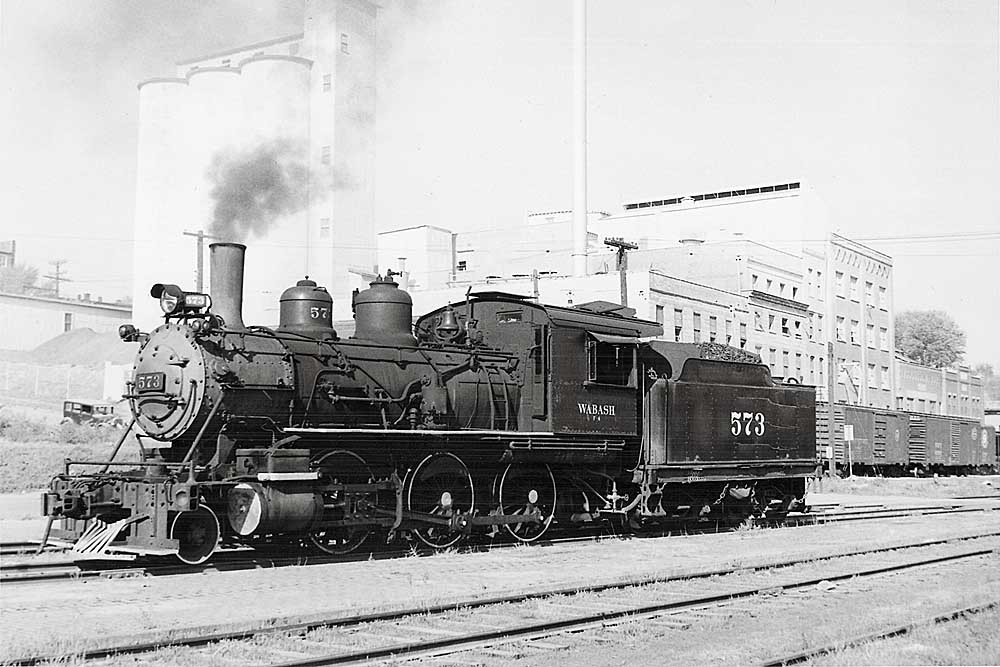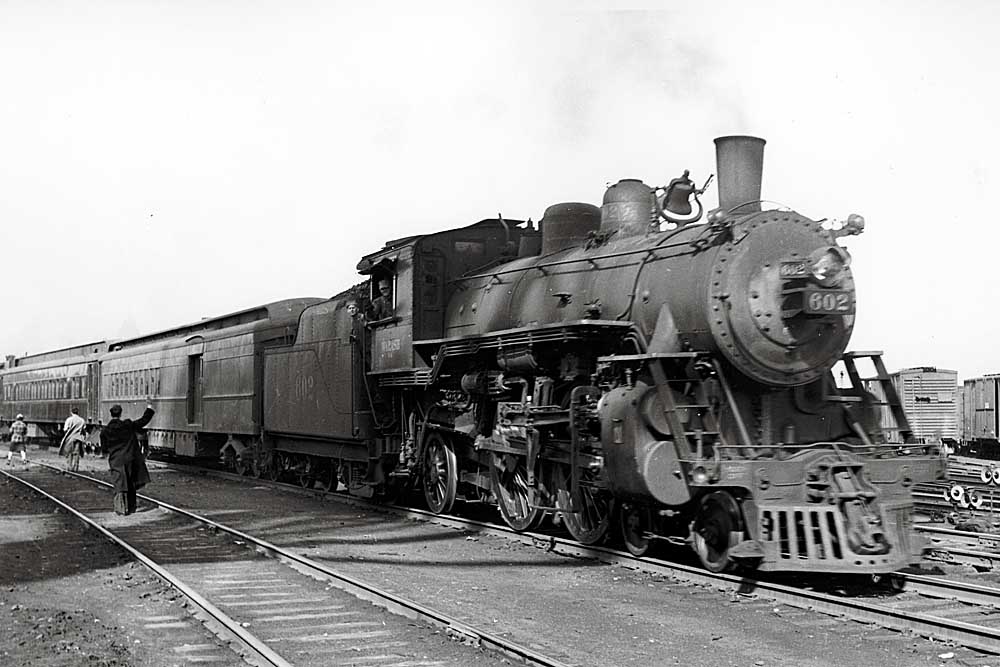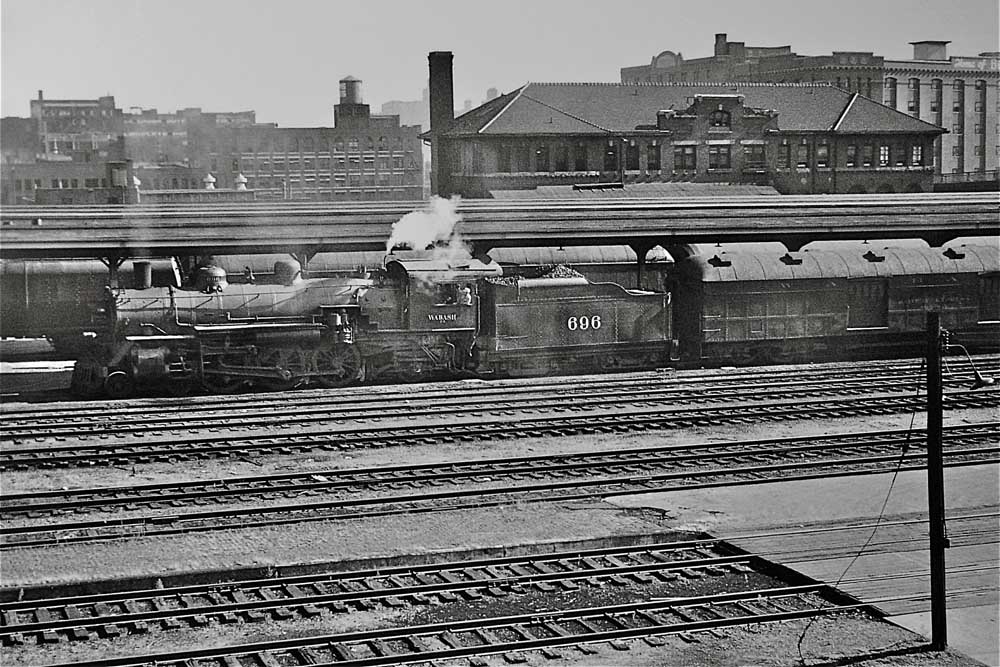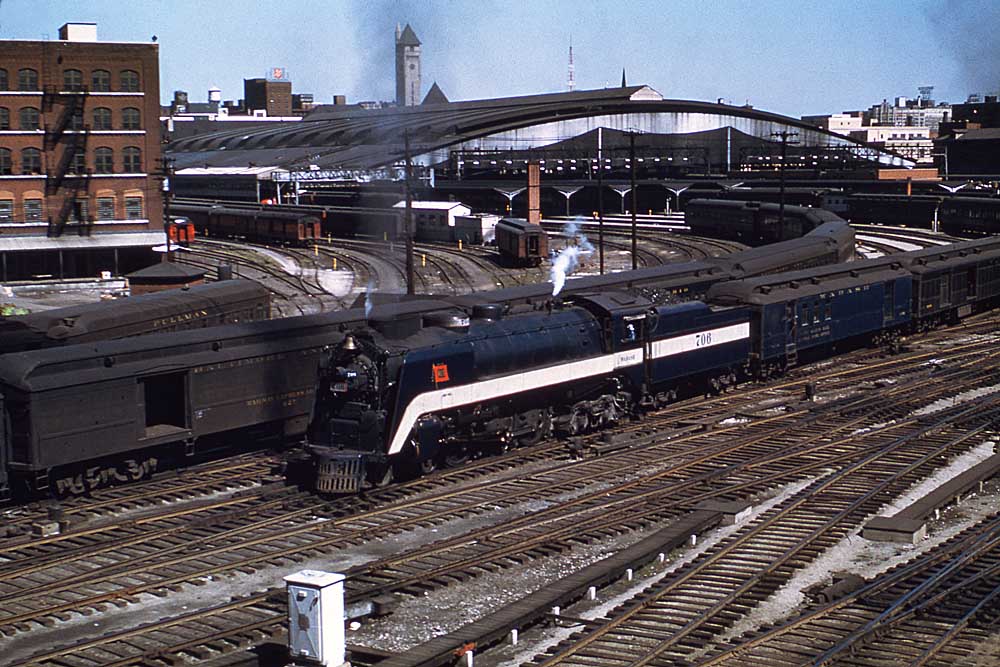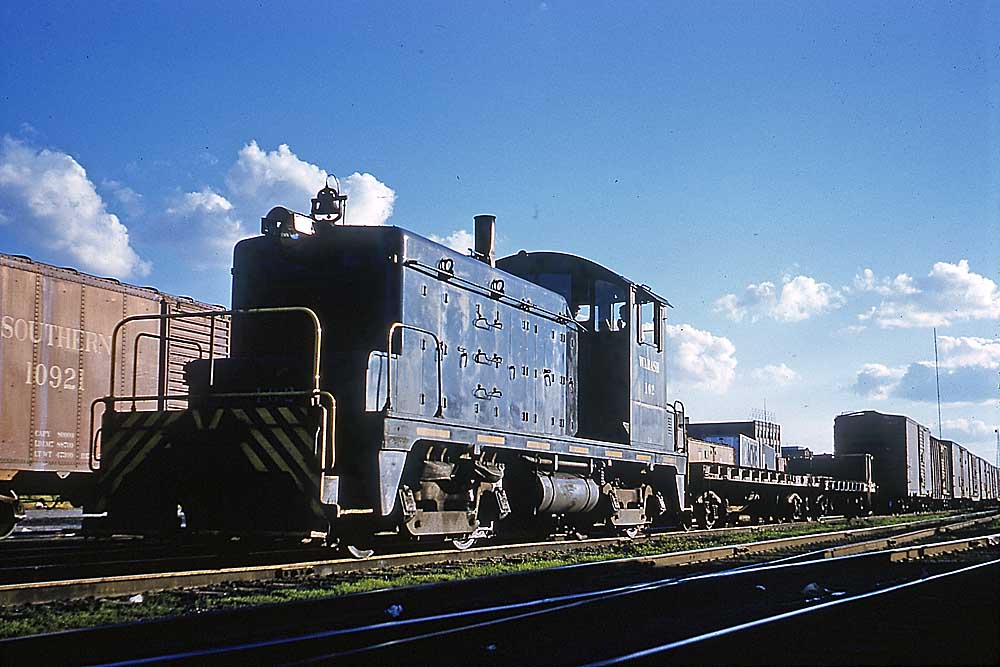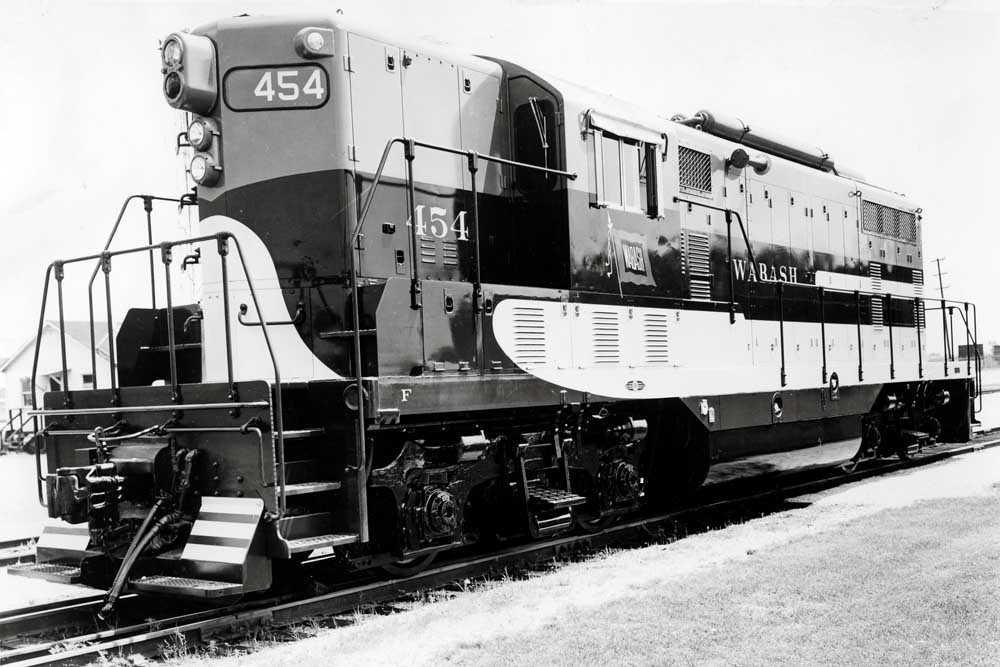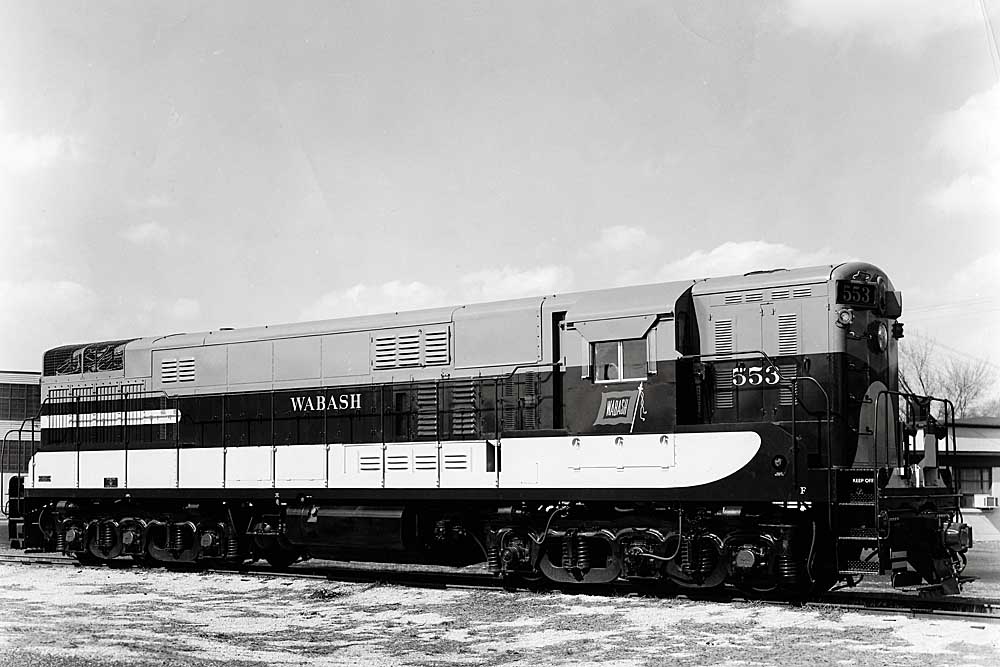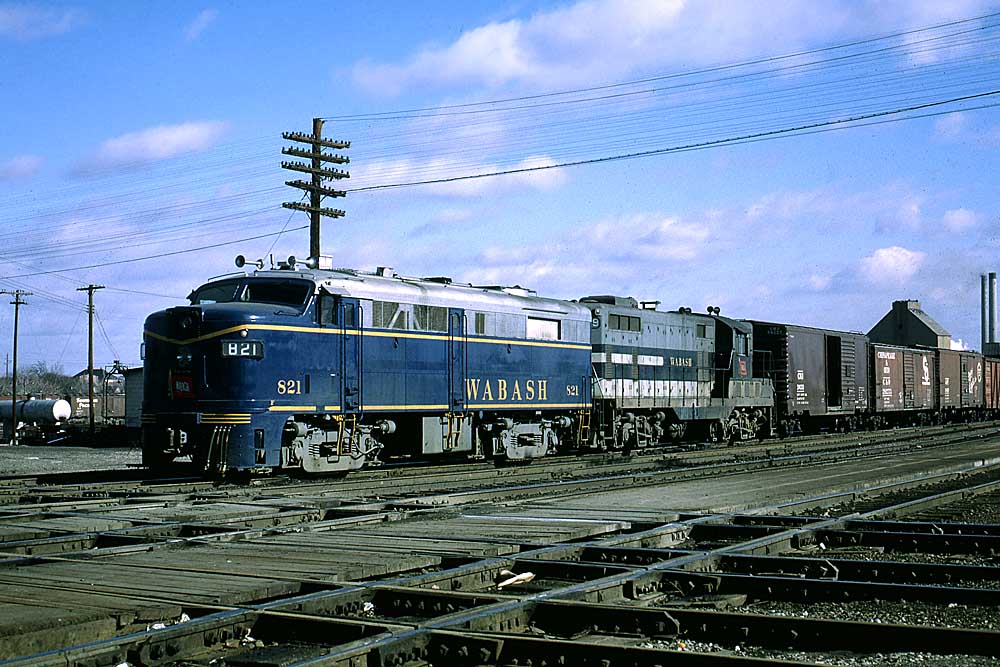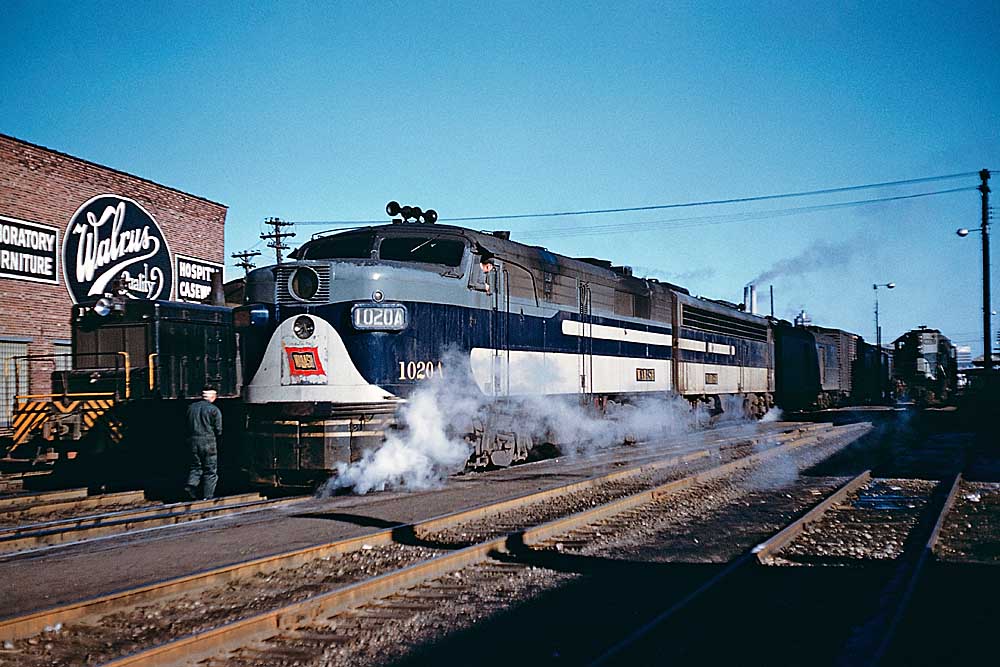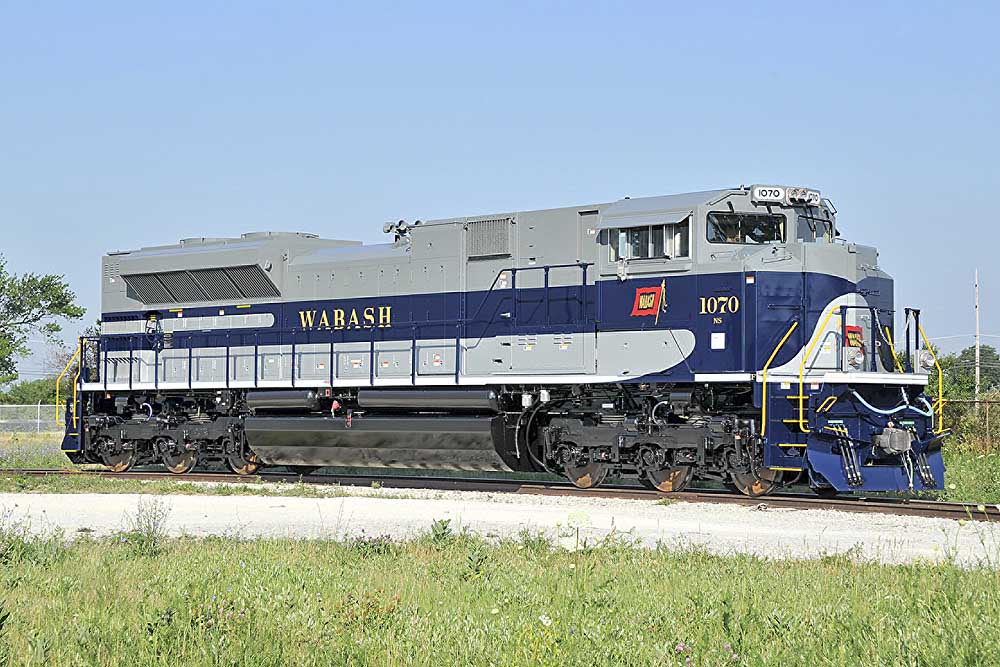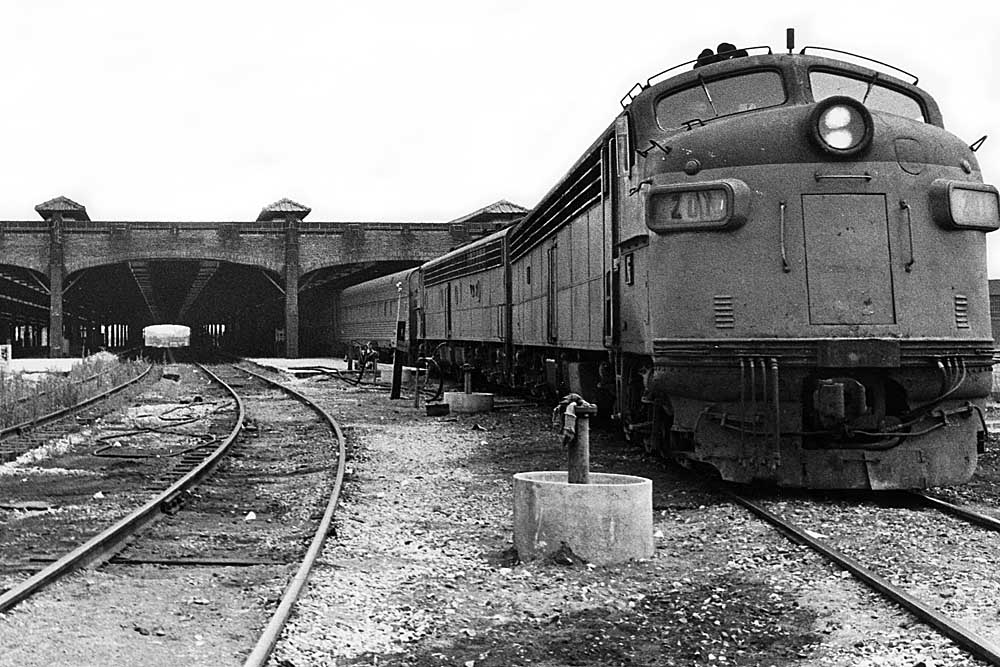Wabash locomotives were distinctive in both steam and diesel eras.
After depending on more than 150 2-8-2s for freights that succeeded typical smaller types, Wabash in 1930 received 50 handsome 4-8-2s and 4-8-4s (25 each) from Baldwin. Perhaps more remembered were seven 4-6-4 Hudsons, rebuilt at Decatur from unsuccessful three-cylinder Mikados in the 1940s, which had smoke deflectors adorned with the flag emblem. Until then, Wabash relied on Pacifics for varnish, four of the J-1 class from the 1910s being adorned, also in the ’40s, in dark blue to match the road’s passenger cars.
Wabash’s first diesels were switchers, always solid black with minimal silver or white lettering. From 1939 through World War II, it received 19 units: 2 Alco “high-hoods” and 5 S1s; 7 EMD SW1s; 4 Baldwins; and a lone GE 45-tonner for St. Thomas, Ont. After the war, it added more Alcos and EMDs (including 4 Canadian SW8s), plus 7 Fairbanks-Morse and 12 Lima-Hamilton switchers. Reflecting its presence in four big cities, Wabash totaled more than 100 bought-new switchers, the last being SW1200 379 in 1957.
In contrast to the dour switchers, road units wore blue, gray, and off-white (originally aluminum).
Wabash’s first road freight units, in 1949-50, were 9 A-B-A EMD F7 sets and 5 similar Alco-GE FA1-FB1 trios. It settled on cabs (no more Bs) and EMD, adding 117 F7As including 22 from GMD in London, Ont. Wabash was essentially dieselized by 1954, although three 2-6-0s worked its Bluffs, Ill.-Keokuk, Iowa, branch into early ’55 and became known among enthusiasts. One, 573, survives in St. Louis’ Museum of Transportation and there is a subsidiary’s ex-Wabash 0-6-0 in Fort Wayne.
During 1950-56, Wabash bought 46 GP7s and GP9s, 17 with steam boilers and the last 3 with dual controls for its lone Chicago commuter train, and while it never owned an early Alco road-switcher, it bit on FM’s Train Master, acquiring 8 in 1956. When GE announced its U25B, Wabash in 1962 took 15. Just before the merger, it turned ecumenical again, adding 8 GP35s and 7 Alco C424s. Wabash had Alco re-engine its Train Masters, and 8 C425s were at Schenectady on merger day, some already painted for Wabash; those were redone in black as N&W 1000-1007 before they left the plant. Likewise, more GP35s on order came out of La Grange as N&W 1302-1308, following 1300-1301, which had been ordered by P&WV. N&W added a “3” to the road number of Wabash units it acquired except for the 12 E8s (2 had been scrapped), 5 of which became N&W 3800s.
Cab-unit diesels replaced steam on Wabash’s modest fleet of varnish after World War II. The first was E7 1000 in 1946 for the new St. Louis-based City of Kansas City; the E7 briefly bore the K.C. train name in its forward blue side panels, the only Wabash unit known to do so. Next came E7As 1001 and 1001A in 1947 for Wabash’s share of Union Pacific’s City of St. Louis; the duo initially ran through to Denver but not beyond because they lacked dynamic brakes. Wabash would buy another E7, 1002; two pairs of Alco-GE PAs, 1020-1021A, initially for the St. Louis-Detroit overnight trains; and ultimately 14 E8As. Wabash 1003 was EMD’s first E8, and 1009 was designated by the builder as its 10,000th locomotive.
When the E8A ordered for the 1951 St. Louis-Chicago Budd domeliner Blue Bird was to be No. 1000, E7 1000 became 1002A. In 1961 Wabash dropped the “A” suffix from all units, renumbering the F7s to 600-726 and the FAs/FBs to 800-814; “A”-suffixed E7s and Train Masters were renumbered above their siblings.
After its 1964 inclusion in the greater Norfolk & Western system, some Wabash locomotives continued to operate with just a renumbering until they were repainted by N&W.





